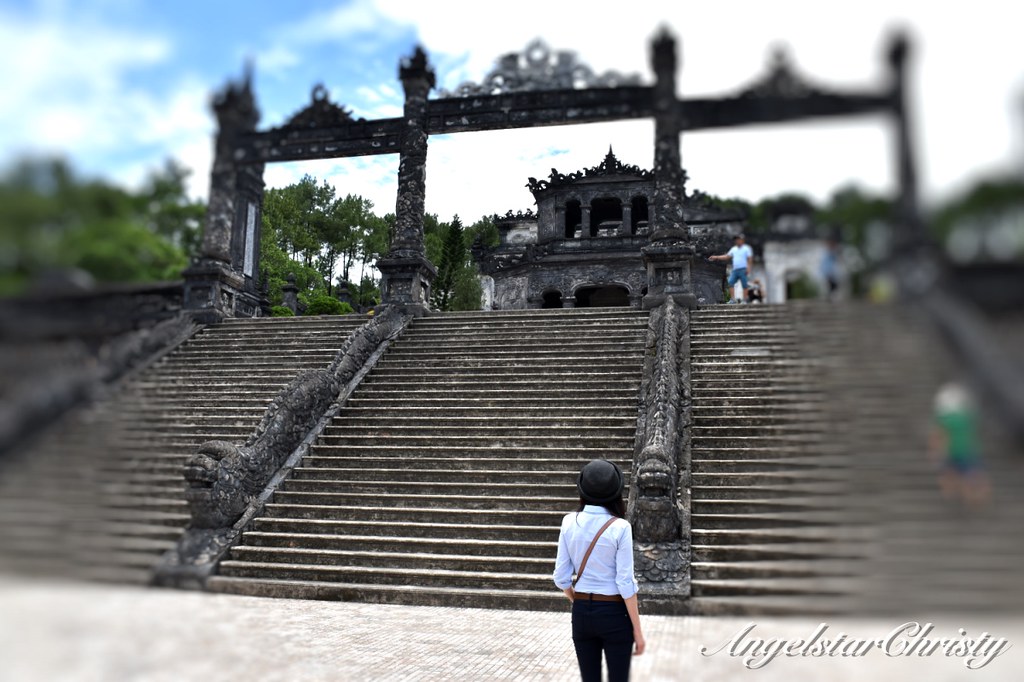
A visit to the central part of Vietnam is never complete without a visit to Hue, and of course, Hoi An, which I have covered in my earlier posts: here, here, here, and here).
A former capital during the feudal period, this is where the royal family who once ruled over the region were seated.
The historical city is much remembered not only for the glory of her royal past, but also the anguish and blood which drenched the grounds from the tragic and excruciating Battle of Hue (or Siege of Hue), touted as one of the "longest and bloodiest battles of the Vietnam War").
The 17th century saw the rising prominence of the feudal lords who greatly benefited from the growing trade in the region, leading to the accumulation of wealth and the claim of power across the territories.
Hue then, known as Phu Xuan, was captured by a Trinh Lord Trinh Sam in 1775, but it was only made the official capital when the Nguyen lords defeated the Trinhs and unified the whole of Vietnam, a feat made possible and successful by Emperor Gia Long, who established the Nguyen Dynasty and ascended the throne as the first emperor of the said dynasty.
Being a history buff, the city of Hue fascinated me and had been on my travel bucket list for its historical value and on one of my returning visits to Vietnam, I decided that a trip to Hue was definitely to be made, along with Hoi An.
It was one-day trip to Hue, as it is not particularly a big city and featured a few places of significant interest.
(Of course, it also depends on the extent of one's interest in a place and the average time one would prefer to spend, at their leisure to ogle at each and every piece of carving on the architecture. I would like that very much too, to be honest)
Time was of an essence, and a day was quite good to fit Hue into my itinerary.
Khai Dinh's tomb was my first stop, a royal mausoleum which was located a little on the outer region of the city of Hue.
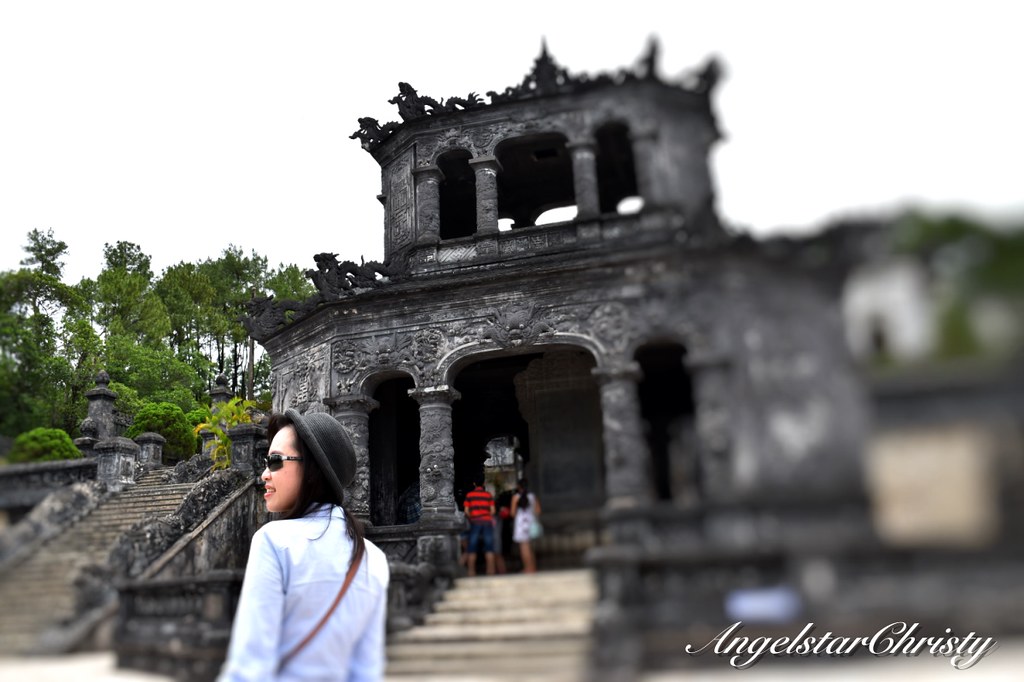
The location of this tomb was a personal choice of the Emperor Khai Dinh, the twelfth emperor of the Nguyen Dynasty, who desired to build his "home of the other world" on the Chau Chu slope, of the Chau E Mountain, approximately 10 kilometres from the city.
In accordance to the Oriental beliefs, it was to have the place where one would dwell after death to be away from where they lived.
The tomb was comparatively smaller to its predecessors (the earlier ruling emperors), in fact, it was the smallest of them all.
However, it was also the most expensive tomb among them all and took the longest to complete and Emperor Khai Dinh never saw its completion which was accomplished by his successor and also his son, Emperor Bao Dai, almost a decade later.
The tomb took 11 years to complete; beginning from its early construction in 1920 and was only established finally in 1931.
Emperor Khai Dinh was not a very popular emperor among the people, due to his close engagement with the French back then, yet the French merely considered him only performing his job as what was required of a paid employee upon the end of his ruling period.
The construction costs of the tomb were extorted from the people through the raised taxes (an increment of 30%) to fund for the extravagant architectural style.
The Emperor was said to be very much influenced by the architectural designs in France (where he paid a last visit before his death), evident in the settings of the tomb, which uniquely mixed both the Oriental (Hindu, Buddhist, Chinese, Vietnamese) and the Western (French, Roman and Gothic) elements in architectural styles.
The grand welcoming entrance exemplified the significance of the architectural mix; with its tall arches and distinctly thatched ends, presenting a spectacular sight from the start.
A picture of grey and solidity, the tomb and the buildings on the rectangular plot on which it occupied, were mostly erected with concrete, wrought iron and slates, giving the whole place a rather morbid and imposing atmosphere.
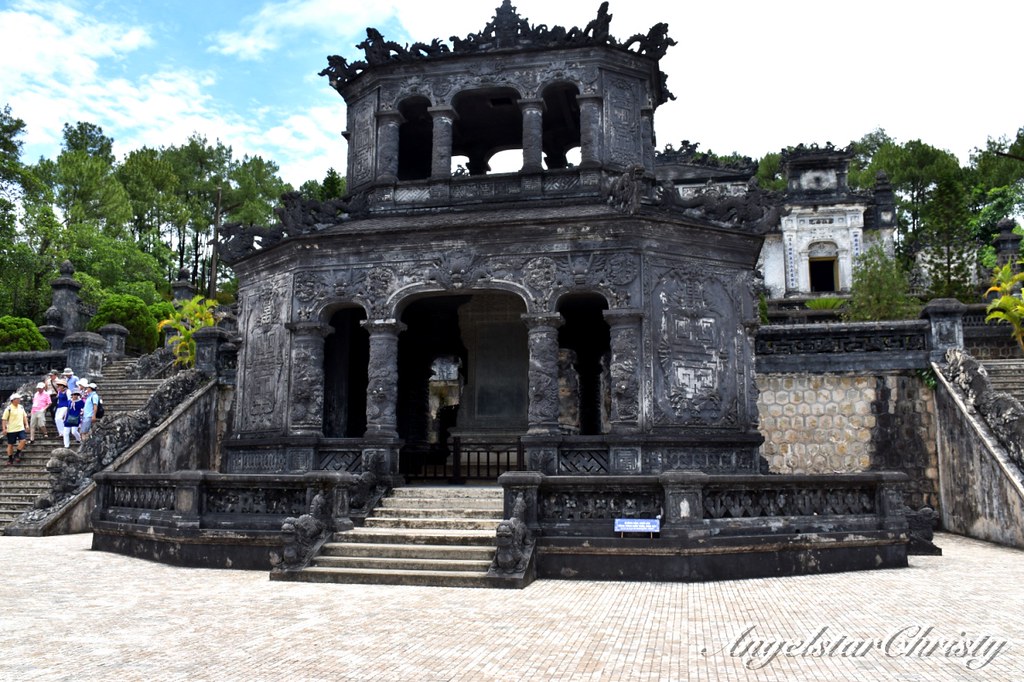
The distinct influence of the Western architecture can be seen in the buildings, though blended with the thatched styles originating from the Orient as well.
The landscape, however, utilises elements of the Oriental beliefs; prioritising the harmony of the wood, land, water, earth and metal in the universal balance.
The tomb is leaning against the mountain, and motifs of dragons and mythical creatures of the East can be seen sculpted into the walls and even plastered across the ceilings of the halls.
It is said that the walls hold the largest sculptures of dragons that can be found in the whole of Vietnam.
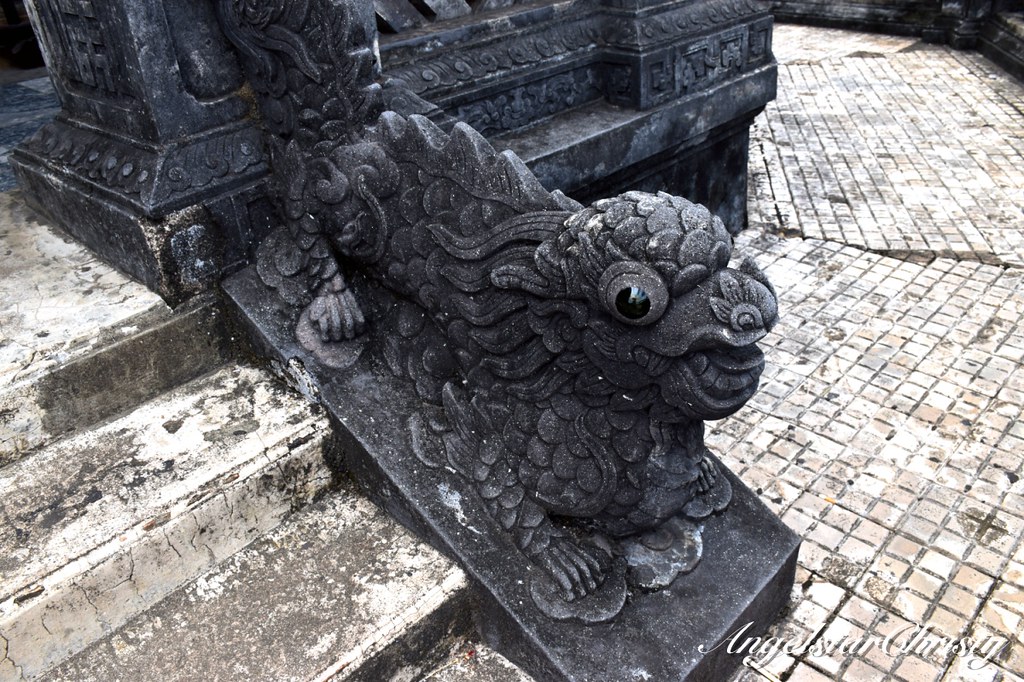
Visitors would find staircases around the tomb, as it is after all located on a slope and against the mountain.
It is not that much of a climb either, each of the staircase only make up a brief flight.
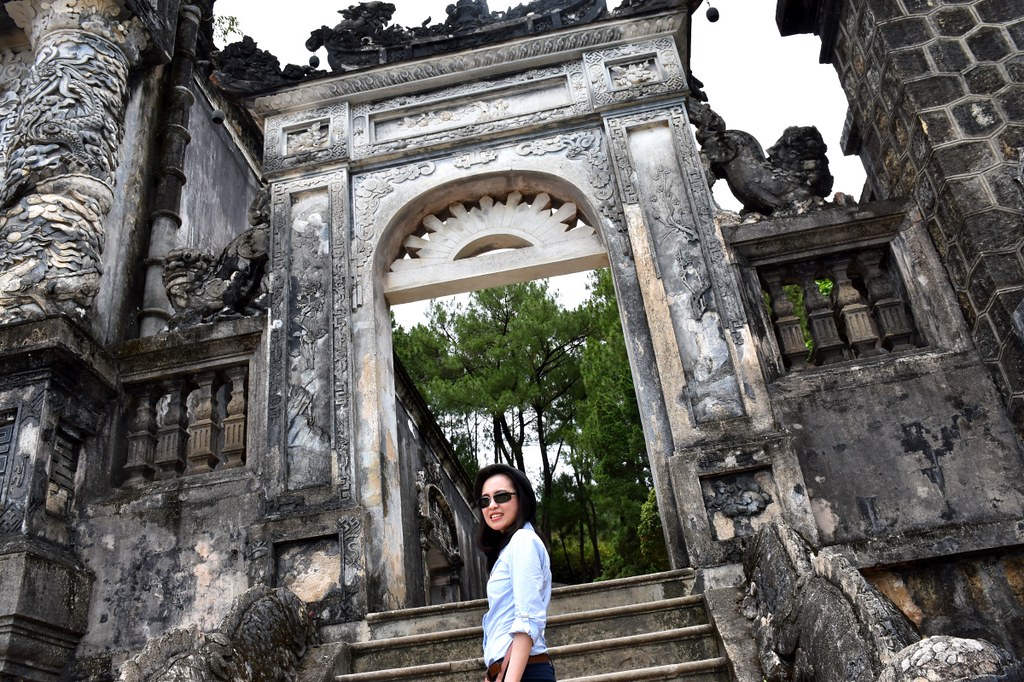
A few notable spots include the epitaph pavilion, following the staircase shortly after the courtyard from the entrance.
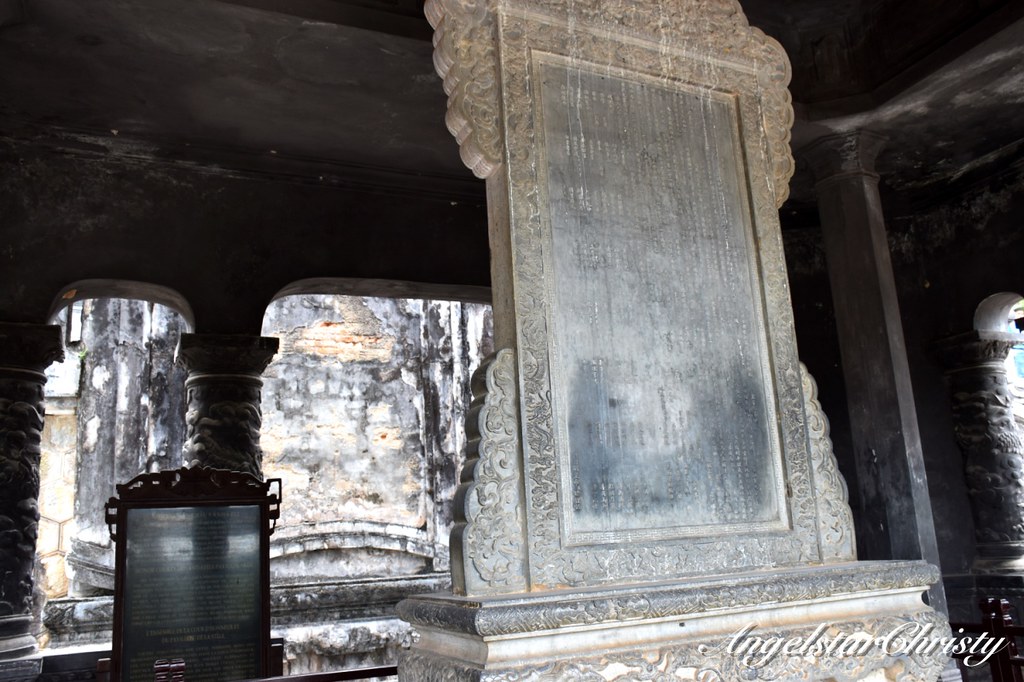
One can also find statues of mandarin officials, complete with their horse and weapons assembled on the courtyard.
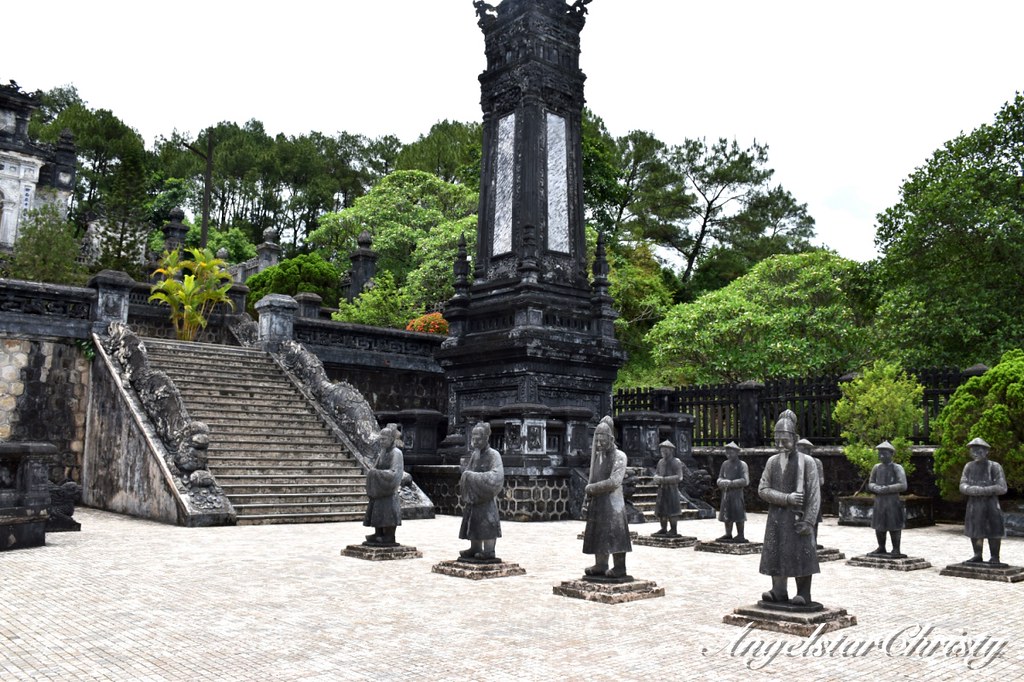

These statues are in twelve and represent the bodyguards of the emperor's tomb.
The highlight is the Thien Dinh/Khai Tanh Palace, which housed the most lavish and elaborate decorations of all.
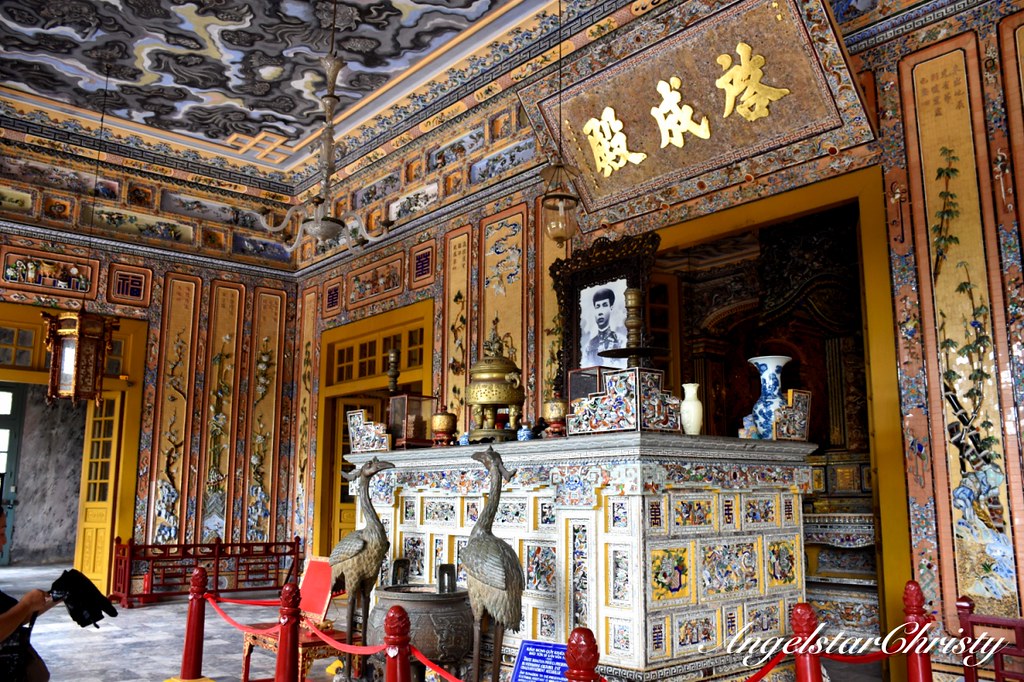
The hall is a glittering sight, enlightened by the bright bronze statues and steeles belonging to the king.
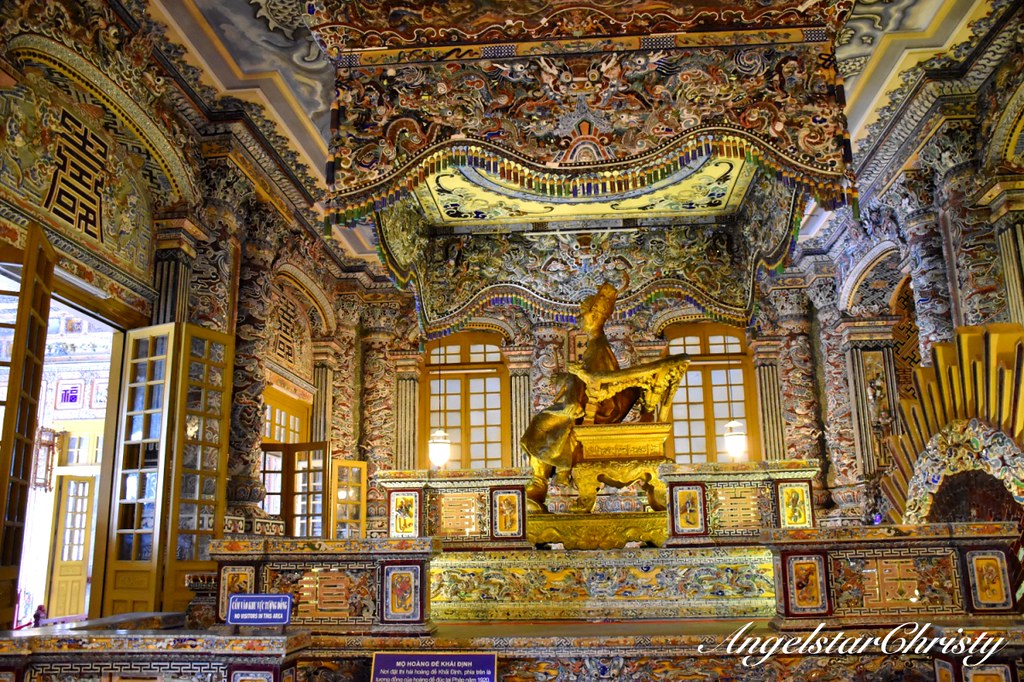
The inner hall housed the tomb of the emperor, where a grave and altar were inspired by Marseilles in France.
The statue on the throne was modelled after the emperor's image and was sculpted in Paris, in the year the tomb begun its construction, in 1920.
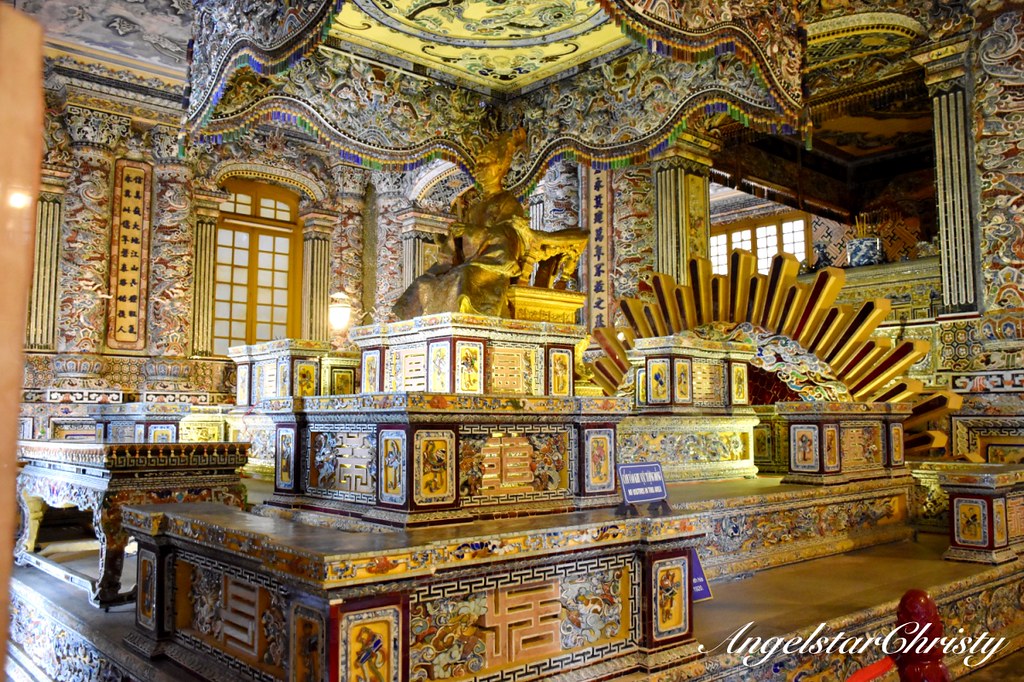
The most striking part of the hall is also its ceiling which is intricately adorned by the painting of nine dragons in the clouds, a significant emblem of emperors as believed in the East, where the emperors are seen as descendants of Heaven and are equated to dragon, a mystical creature symbolising power.
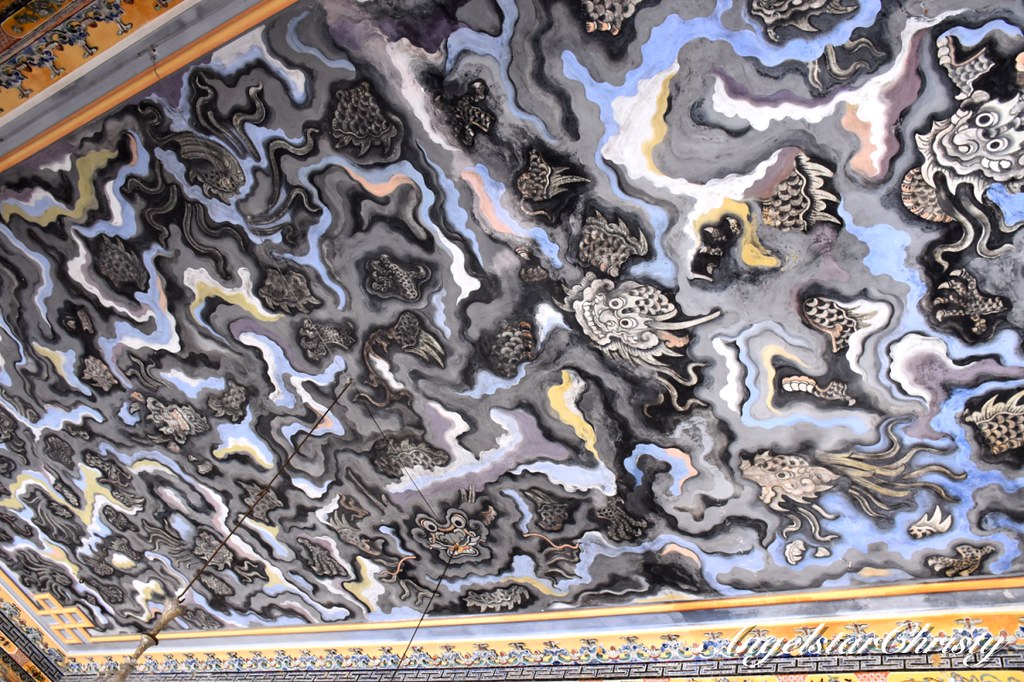

Emperor Bao Dai, who completed the tomb's construction following its initiation by Emperor Khai Dinh, became the last emperor of the Nguyen Dynasty and this tomb too, in his suit, marked the last imperial tomb of the same dynasty, making this the last of the legacy of the Nguyen Dynasty which lasted for two centuries.
The place left quite an impression and is one of the top attractions in Hue, despite it being outside the city.
It is perhaps the remains or the last of what is left of the Imperial (feudal) reign in Vietnam; the end of glitter where all that is, is carved into stone, memories and all.
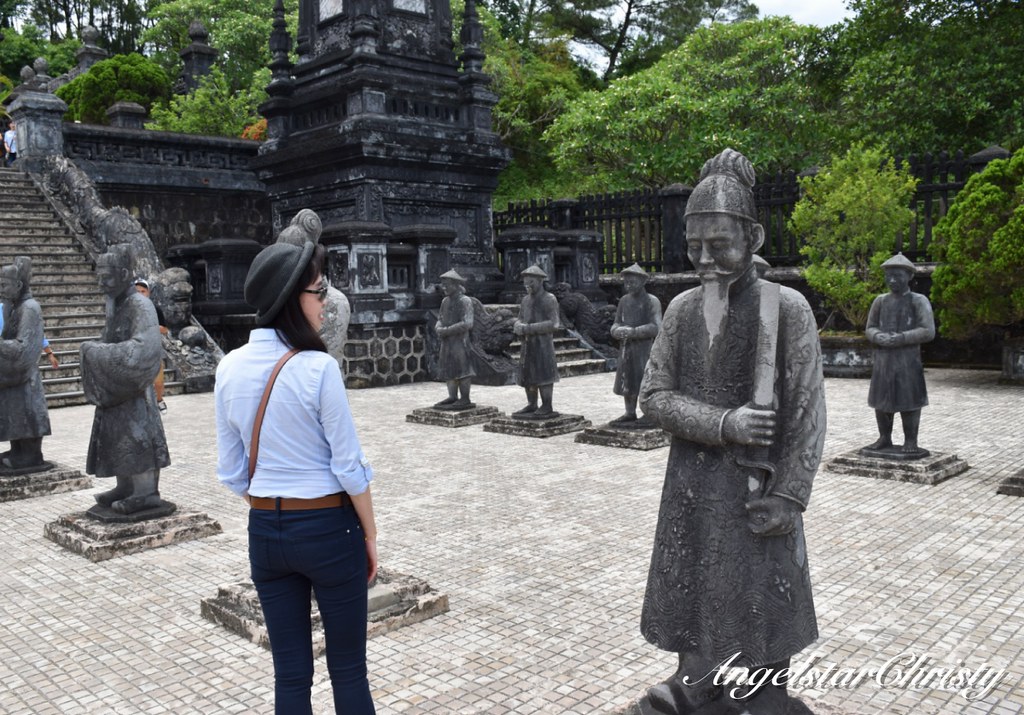


More information:
Entrance fees: FREE
Opening Hours: 7.30am- 5.00pm daily
How to get there: Motorcycle or taxi
You do not have to agree with me.
Art Direction and Photography Styling by Me.
Photos/Videos all belong to me and are copyrighted.
Please kindly ask for permission if you need to use any of my images.
Check out my Pinterest @Angelstarc
Follow me on my live updates on my life, happening on SNAPCHAT @angelstarchrist



0 comments